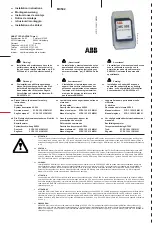
Barracuda ATA Family Product Manual, Rev. B
11
•
Standby mode
The drive enters Standby mode when the host sends a Standby
Immediate command. If the host has set the standby timer, the drive
can also enter Standby mode automatically after the drive has been
inactive for a specifiable length of time. The standby timer delay is
established using a Standby or Idle command. In Standby mode, the
drive buffer is enabled, the heads are parked and the spindle is at rest.
The drive accepts all commands and returns to Active mode any time
disc access is necessary.
•
Sleep mode
The drive enters Sleep mode after receiving a Sleep command from
the host. In Sleep mode, the drive buffer is disabled, the heads are
parked and the spindle is at rest. The drive leaves Sleep mode after
it receives a Hard Reset or Soft Reset from the host. After receiving a
reset, the drive exits Sleep mode and enters Active mode with all
current translation parameters intact.
•
Idle and Standby timers
Each time the drive performs an Active function (read, write or seek), the
standby timer is reinitialized and begins counting down from its specified
delay times to zero. If the standby timer reaches zero before any drive
activity is required, the drive makes a transition to Standby mode. In both
Idle and Standby mode, the drive accepts all commands and returns to
Active mode when disc access is necessary.
1.8 Environmental tolerances
1.8.1 Ambient temperature
Ambient temperature is defined as the temperature of the environment
immediately surrounding the drive. Actual drive case temperature should
not exceed
69°C (156°F) within the operating ambient conditions. Rec-
ommended measurement locations are shown in Figure 3 on page 20.
Above 1,000 feet (305 meters), the maximum temperature is derated
linearly to 112°F (44°C) at 10,000 feet (3,048 meters).
Operating
0° to 55°C (32° to 131°F)
Nonoperating
–40° to 70°C (–40° to 158°F)
















































